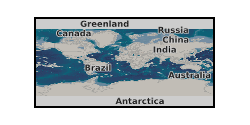Silicates
Type of resources
Topics
Keywords
Contact for the resource
Provided by
Years
Update frequencies
-

This project is aimed at understanding what kind of conditions the Earth's core formed under and how this affected the amount of oxygen present in the rocky interior of the Earth. It uses experiments which simulate the very high pressures and temperatures that would have been present in the Earth's interior when the core formed, combined with very precise chemical analyses of these experiments. From these results I will learn how certain chemical elements distributed themselves between the metal core and the rocky outer part of the Earth, and whether this distribution behaviour changes with different conditions and with the amount of oxygen present. By comparing the results I get from the experiments with the chemical compositions of rocks from the Earth and very primitive meteorites we will be able to understand better how the Earth's core formed, and how this may have affected the chemistry of our planet and the development of its atmosphere and oceans. Four papers are linked to this grant: Stable chromium isotopic composition of meteorites and metal-silicate experiments: Implications for fractionation during core formation Unlocking the zinc isotope systematics of iron meteorites Iron isotope tracing of mantle heterogeneity within the source regions of oceanic basalts Isotopic evidence for internal oxidation of the Earth's mantle during accretion
 NERC Data Catalogue Service
NERC Data Catalogue Service